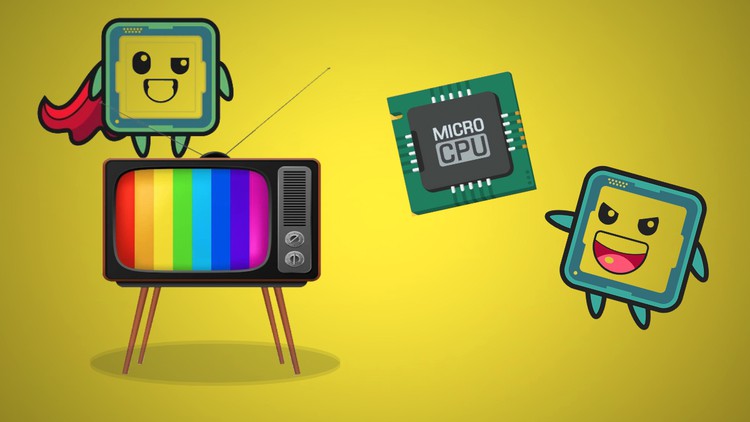
Master Digital Electronics and Robotics. Go from Zero to building a real CPU !
What you will learn
Fundamental concepts in digital electronics
How a CPU works by building one from 0
How microprocessors and microcontrollers work and the difference between the two
How softwares are loaded and executed on a microprocessor and a microcontroller
Key building blocks of designing a CPU, a microprocessor and a microcontroller
Memory types like Register, Cache, RAM, SRAM, DRAM, ROM, EEPROM and Flash
The different peripherals that exists in both microprocessor and microcontroller
How has technology progressed starting from the 18th century up to 2022
The different communication protocols that are extensively used in a microcontroller
How operating systems (OS) work and why we need them in the first place
The concepts you will learn can be applied in Robotics, Embedded Software Engineering, Computer Science and of course, Electronics
A solid foundation in the area of digital electronics on which it’s easy to build and fruther grow your knowledge
Description
Welcome to Crash Course Digital Electronics!
CAUTION: If you don’t like history, in particular, you are not interested in finding out how the technology has evolved from ancient programming methods to high-level programming languages, or how we scaled from Intel 4004 (first MPU in the world) with a transistor count of just 2300 to modern microprocessors like the M1 microprocessor with a transistor count of a whopping 16 billion, then this course is not for you.
This course was developed to teach not only how the fundamental parts of digital electronics work, but how on earth we have reached to build such amazing things? We are going back all the way to 1839 to the Jacquard machine which is considered as the first programmable mechanical computer that was programmed using punch cards, all the way to modern compilers, programming languages, microprocessors, microcontrollers, and operating systems.
All the tutorials are built using animation techniques to illustrate the concepts and for ease of understanding (I’m not the best animator by far, but I’m trying really hard !).
Your knowledge will be tested! – After finishing a chapter, you will be given a quiz with a plethora of questions (including images and diagrams) you will need to answer. If you get them right, you can be confident that you have understood what I had to say in that chapter.
Overall what you will learn after finishing this course :
– the basics of digital electronics
– how positive/negative numbers, floating-point numbers, characters are encoded in binary
– how a CPU works by building one from SCRATCH!
– how a program is executed on a CPU
– how to build an external RAM, starting from a 1-bit memory cell and how to scale it up to a bigger one
– the difference between a CPU, a Microprocessor and a Microcontroller
– how a Microprocessor and a Microcontroller works
– the multitude of internal peripherals that can be found inside a modern Microprocessor and a Microcontroller
– how a compiler works, including linker and linker script file
– how to program a microcontroller
– how the different communication protocols work in a microcontroller
– how does an Operating System works and why do we need them
REMEMBER… I’m so confident that you’ll love this course that we’re offering a FULL money-back guarantee for 30 days! So it’s a complete no-brainer, sign up today with ZERO risk and EVERYTHING to gain.
Content